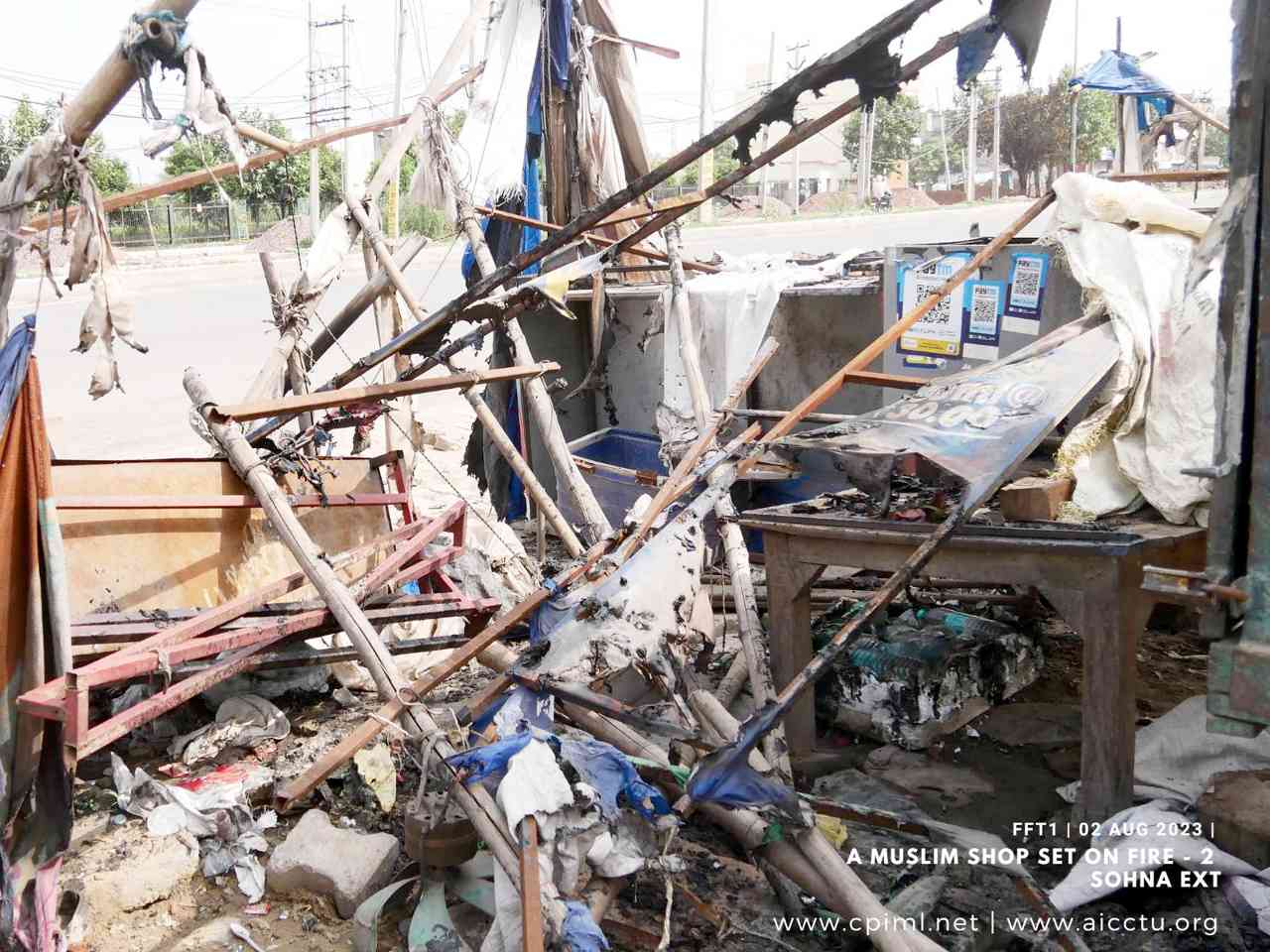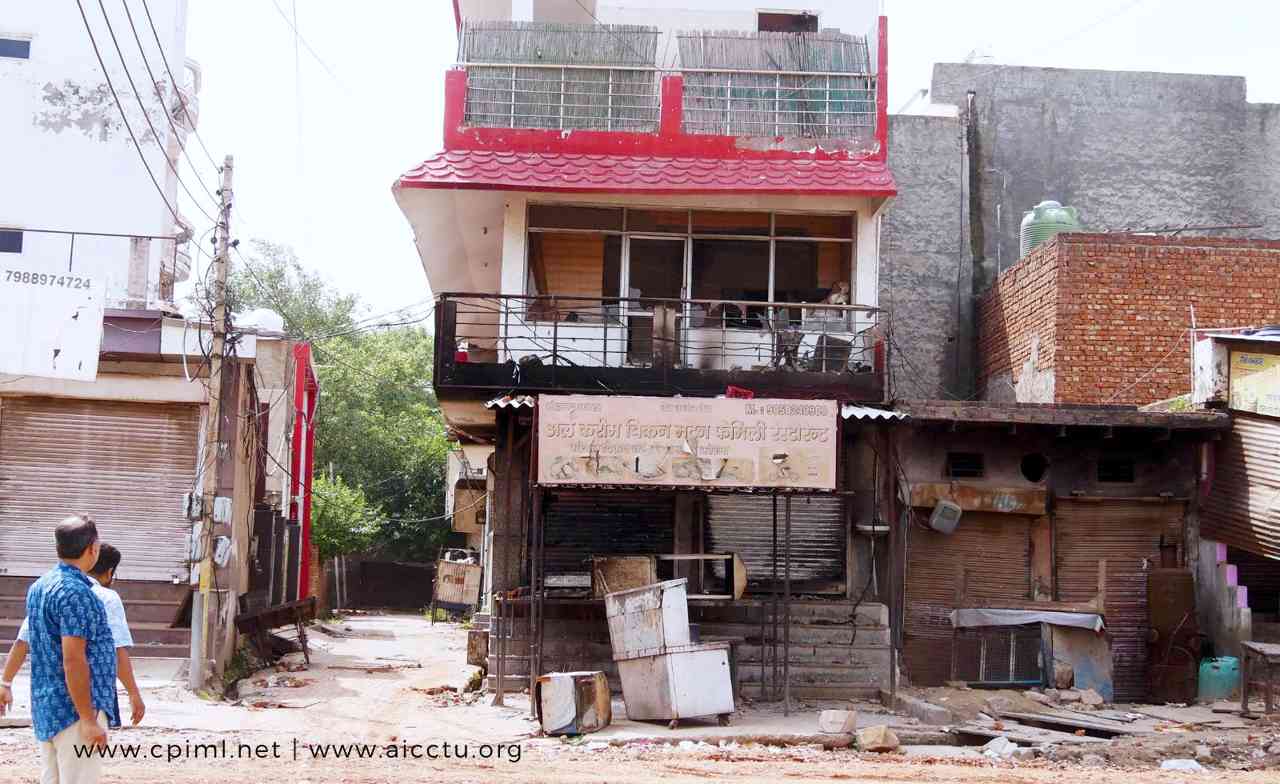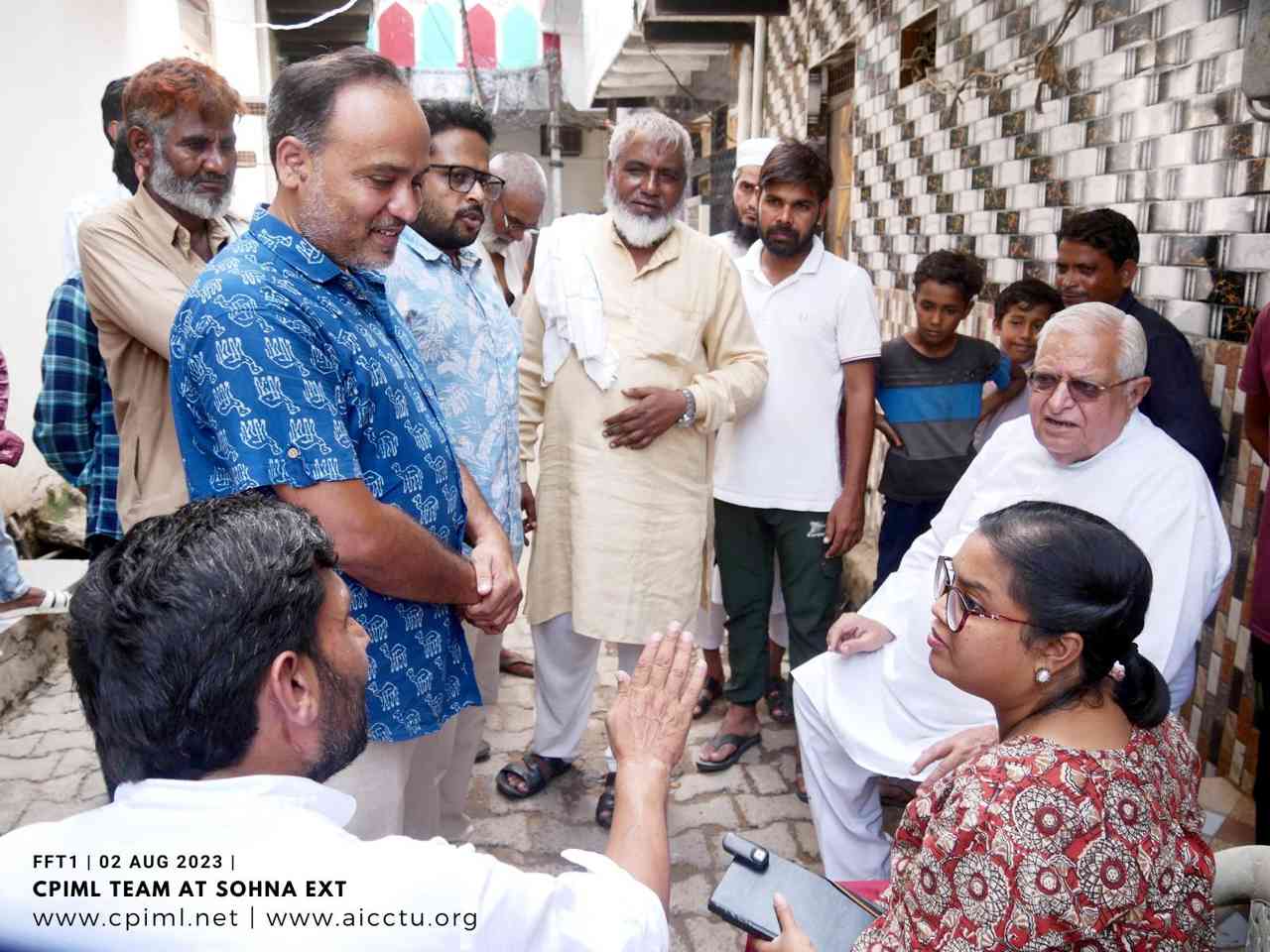Violence at Nuh: A Story of Hatred, Intimidation, and Gunshots by Hindutva Groups To Stoke Communal Violence

On August 3, 2023, two CPIML fact finding teams visited Nuh and surrounding areas in Haryana that witnessed intense communal provocation and violence by right-wing groups on July 31, 2023. One team comprising Prem Singh Gahlawat, Ravi Rai, Shweta Raj, Akash Bhattacharya and Arun met members of Muslim and Hindu communities in Nuh (Mewat), Sohna (Gurgaon), and looked to understand the sequence of events that led to the current ground situation. A second team composed of AICCTU members Abhishek, Amarnath Sharma and Advocate Ganesh visited working-class slums in Parla Village near Sector 70A, Bhondsi Village, and Sohna village.
During the investigation, the teams found eerie similarities between the roles played by right wing groups such as Bajrang Dal (BJD) and Vishva Hindu Parishad (VHP) in stoking communal violence in Nuh during the ‘Shobha Yarta’, and during communal violences in recent past around other ‘Shobha Yatras’ in Bihar, West Bengal, and Delhi's Jahangirpuri. These large scale ‘Shobha Yatras’ organized by Bajrang Dal and VHP are a recent phenomenon, like in the case of Nuh where it began three years back. Before that, most of these processions were organized at local levels and went off peacefully.
Across religious lines, the locals pointed towards the intense campaign of hate and threat by right-wing groups against Muslims that preceded the July 31 ‘Shobha Yatra’. Despite the provocative videos of Monu Manesar, a right-wing vigilante accused of the brutal murder of Nasir and Junaid in February 2023, and Bajrang Dal leader Bittu Bajrangi who was present at the procession on 31 July, the police took no preventive action. Just a few hours before violence erupted in Nuh, Surendra Jain, General Secretary of VHP, was seen delivering a hate speech against the Meo Muslims in Mewat. Addressing a large crowd at a temple in Nuh, Jain called for changing the character of Mewat: an area with a majority Muslim population.
According to locals, participants in the Shobha Yatra were armed with swords, pistols, and sophisticated guns. As they crossed the Nuh town, they were waving weapons, raising provocative and anti-Muslim slogans, and harassing the locals. This provocation, along with the already seething anger among the local population about the hate speech videos of Monu Manesar, led to intense clashes.
From the sequence of events, it was found that after the initial violence in Nuh, social media was used to spread rumours of massive anti-Hindu violence and to falsely claim that many Hindus had been killed. The violence soon spread to Sohna and other places in Gurgaon, where a right-wing mob, numbering hundreds, attacked Muslim slops and mosques. The roads were blocked and Muslims, including children, were specifically targeted. According to the local members of the community, despite all the violence, the police personnel remained mute spectators.
Locals Stood in Solidarity with Each Other
Despite efforts by right-wing groups to intensify the communal clashes into full blown riots, the solidarity among the local populations cutting across the religious lines saved many lives and controlled the volatile situation. In a particular incident of attack on mosques in Sohna, members of Sikh community came out to protect Muslims against the attack by right-wing goons. Jats in the Mewat area also stood with the local Muslims against the violence.
In Nuh, it was noted by many members of the community that most of the rioters came from outside the area. The locals questioned the role of police and the administration in both Nuh and Sohna. The peace committee in Nuh had already informed the local administration about the attempts to stoke communal violence in the area through the presence of Monu Manesar, but police deployment during the procession was feeble.
Criminal Complicity of the State
The local accused the BJP government in Haryana and Centre of attempting to vitiate communal harmony in the country. They said that violence in Nuh was the result of the complicity of the state, as they were aware of the volatile situation and did nothing to prevent it. In fact, no actions were taken by the government against the hate speeches and armed mobilisation in the procession, despite information.
The locals noted that the situation in Nuh has to read in tandem with the communal polarisation campaign across the state and the country. For years, there had been attempts by right-wing groups, with criminal support from the BJP government, to carry out the nefarious Hindutva project in Mewat region.
A Campaign Against Migrant Workers
In Nuh and areas of Gurgaon, there is a coordinated attempt by right-wing forces and local administration to target migrant Muslim working class population, especially those belonging to Bengal. Several Muslim slum areas, especially in Gurgaon have been attacked or threatened with violence if they don’t vacate the place. Social media and also mainstream news are using the ‘Rohingya Muslim’ tag to create terror among the poor Muslim migrants.
When the fact finding tried to talk to some of the migrant workers, they were stopped by the police. Most of the slums are now empty, with many choosing to leave the city.
Reprisals and A Sense of Terror
The situation continues to remain tense in Nuh and several areas of Gurgaon. During the visit to Anjuman Jama Masjid in Gurgaon, which was burnt, and its Imam killed, the team witnessed members of right-wing groups riding on bikes and trying to create further trouble. Later, the group was chased away by police.
When the team visited Nuh, the situation resembled a ghost town: all shops were closed, and no one was visible outside their homes. Curfew was in place. Locals said that police had been conducting mass raids and arrests, with many innocents also taken away. There is a sense of fear among the Meo Muslim population.
The CPIML delegation also met the Nuh Deputy Commissioner and raised concerns about widespread arrests of innocents, which is creating a sense of terror among the local population.



Charu Bhawan, U-90, Shakarpur, Delhi 110092
Phone: +91-11-42785864 | +91 9717274961 E-mail: info@cpiml.org

